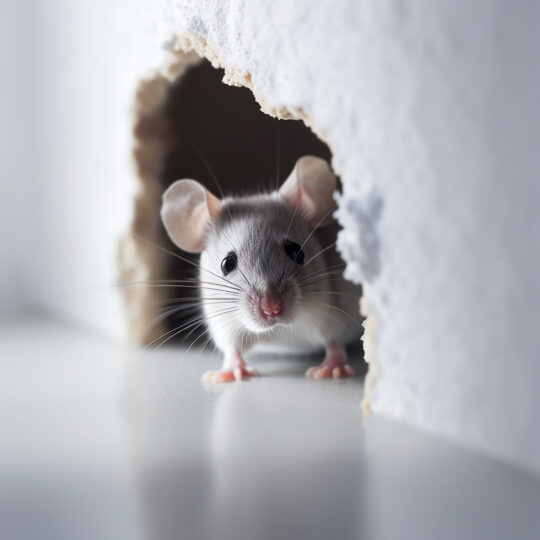Sealing Rodent Entry Points
How to Protect Your Home this Winter

If you think your home is safe from rodents in the winter, think again. Many pests look for shelter from the harsh conditions and will squeeze through the smallest openings to find it. This means you need to find these openings as well and then find an effective method of sealing rodent entry points.
Inspecting Your Home for Possible Entry Points
The first step in pest prevention is inspection. Conduct a thorough walk-through of your home, inside and out. Look for any cracks, holes, or gaps that rodents could exploit. Pay attention to these specific areas:
- where utility lines enter the home
- windows and doors
- areas covered by plants
- attics and crawlspaces
- foundation
Even if you think the crack is too small, there’s no possible way something could get in, that’s right, think again.
Sealing Rodent Entry Points
How you seal these openings and the materials you use can make it more or less effective.
- Exterior Gaps. Use weather-resistant materials like steel wool, caulk, or expanding foam to seal gaps around doors, windows, and foundation. Focus on areas where different building materials meet, as these joints are common entry points.
- Reinforcing Doors and Windows. Install door sweeps and use weather stripping to seal gaps at the bottom of doors. Ensure that windows close tightly, and consider adding screens to vent openings.
- Closing Wall Holes. Inspect interior and exterior walls for any holes or gaps. Use steel wool or wire mesh to fill these openings, as rodents find it difficult to chew through these materials. Seal gaps around pipes or cables with caulk to prevent entry.
- Securing Attic and Crawlspace Access. Ensure that vents are covered with mesh screens, and seal any gaps in the eaves or roofline. Check for openings around utility lines entering these spaces and seal them tightly.
- Foundation Cracks. Use concrete or mortar to fill any gaps or cracks. This not only prevents rodents but also helps with overall home maintenance.
- Vent Covers. Install rodent-proof vent covers to prevent access while maintaining proper airflow. These covers are designed to keep pests out while allowing ventilation.
Deterring Rodents
Even after sealing your home, there are other ways to help ensure you don’t have a rodent infestation.
- Maintaining a Tidy Yard. Rodents are attracted to clutter and debris where they can hide. Keep the yard well-maintained, trim vegetation, and move woodpiles away from the house.
- Remove Food Sources. Keep trash cans well sealed and compost away from the house. Don’t leave pet food outside.
- Inspect Regularly. Stay vigilant by conducting regular inspections of your home’s exterior. Address any wear and tear promptly, and reseal areas that may have been compromised over time.
Sealing rodent entry points is a proactive and effective way to help protect your home from unwanted guests. By taking the time to inspect, identify, and seal potential access points, you can help prevent an infestations. Combine these efforts with regular maintenance, and professional assistance from Shades of Green Lawn & Landscape when needed, and you’ll be well on your way to a rodent-free home.